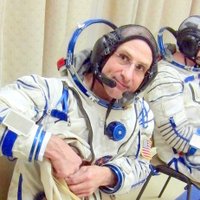
Don Pettit
@astro_pettit
NASA Astronaut, now in space.
ID: 310804819
https://www.nasa.gov/people/donald-r-pettit/ 04-06-2011 11:23:32
798 Tweet
93,93K Takipçi
282 Takip Edilen



Earthly eyeball; International Space Station with a 360 degree view.


Aurora seen today from International Space Station while orbit was passing between Australia and Antartrica; photographer Jannicke Mikkelsen now on the private FRAM2 space mission will be having an even better view in their polar orbit.

Green vaporous turbulence; tonight’s show of aurora from International Space Station


Changes in attitude, changes in latitude: International Space Station We rotated 180 degrees and flew backwards for yesterday’s Soyuz docking. This is a bit long but keep watching for the surprise in the middle.


Formation flying; Starlink satellites tracing parallel lines in the sky. Thanks to Babak Tafreshi for assembling this clip from timelapse images.



“Two Steppin on the Moon”; Country Western singer Josh Turner Josh Turner visited Houston Mission Control and sang us this song. Suni Williams and I decided to give it a try while Butch Wilmore filmed the effort. Here is “Two Steppin in Space”. Big thanks to Josh Turner


